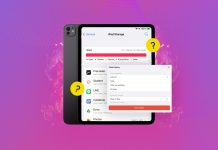 On the most recent edition of the Macgasm podcast, we discussed why we thought the 3G iPad wasn’t dual-mode, with the ability to run on CDMA and GSM carriers.
On the most recent edition of the Macgasm podcast, we discussed why we thought the 3G iPad wasn’t dual-mode, with the ability to run on CDMA and GSM carriers.
It turns out we aren’t the only ones scratching our heads over this move.
Rene Ritchie at TiPB has been wondering the same thing, and has some good information:
However, the radio is only part of the equation. The other part is the antenna. Supporting different frequency bands requires different antennas at different lengths.
The AT&T/GSM model supports 850, 900, 1900, and 2100 MHz for UMTS/HSPA, and 850, 900, 1800, and 1900 MHz for GSM/EDGE. That’s 5 bands (pentaband) already.
The CDMA/Verizon mode supports 800 and 1900 MHz for CDMA/EVDO rev. A. That’s 2 bands (dualband).
That’s at least 6 bands to deal with, if the 1900 MHz can be used for both. That’s a lot more antenna to deal with compared to what is currently found on the iPhone 4 or iPad.
To make things even more interesting, the Verizon iPhone uses the Qualcomm MDM6600 radio chipset, which supports CDMA and GSM. This chipset is used in Verizon’s “world phone” Droid Pro, and allows users to use CDMA in the States, and GSM abroad. For whatever reason — probably the antenna thing outlined above — Apple hasn’t gone this route.
So, will we always see separate CDMA and GSM mobile devices from Apple? My guess is no; the company will work through these issues and be able to consolidate its product lines in the future.
Sounds like a great iPhone 5 rumor, doesn’t it?
Editor’s Note: I was wrong in the podcast in saying that Apple doesn’t use Qualcomm parts. My bad.
Article Via TiPB






